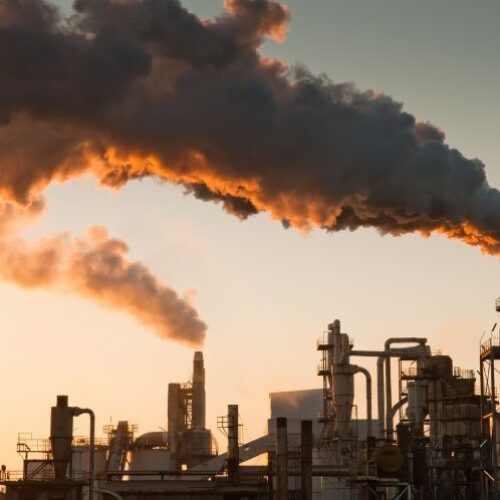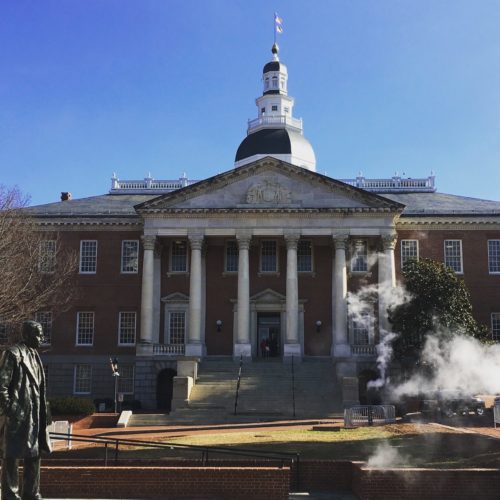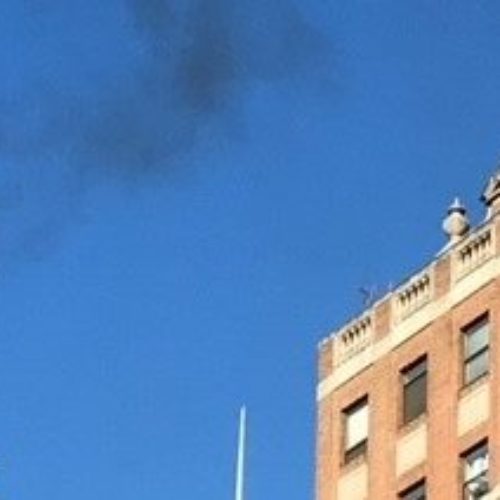Large-scale building retrofits seen as key to meeting New York climate targets
As New York State forges policies to achieve its ambitious clean energy and climate goals, its buildings could be in line for a major efficiency upgrade.

Photo by Julius Drost on Unsplash
Gov. Andrew Cuomo has pledged to reduce greenhouse-gas emissions 40 percent below 1990 levels by 2030, and 80 percent by 2050 — in line with the “Under 2 MOU,” an international agreement among subnational governments that have vowed to meet strict climate targets. Considering that buildings comprise 40 percent of carbon emissions throughout the state, and nearly three-quarters in New York City, policymakers say that finding a way to minimize their reliance on polluting fuels will be a critical step in the transition to a low-carbon future.
The challenge is a daunting one. New York City alone has one million buildings, and the lion’s share of greenhouse-gas emissions are generated by onsite combustion of natural gas and fuel oil to provide heat and hot water, said John Lee, deputy director for green buildings and energy efficiency in the New York City Mayor’s Office of Long-Term Planning and Sustainability, during a conference earlier this week. A large portion of those buildings use steam heat, whose systems date back to the Victorian era. Many function inefficiently, underheating some apartment units and overheating others, leading residents to open their windows in the dead of winter for relief.
The result is a tremendous amount of waste. A report last year by the Energy Efficiency for All Project, a collaboration between the Natural Resources Defense Council, the National Trust and other organizations, found that in the city’s multifamily housing, which comprises the largest building sector, upgrading steam systems throughout the city would save $147 million in fuel and maintenance annually and lower carbon emissions by nearly 312,000 tons.
“If we could optimize every steam heat [system] in the city, we’d get a four-percent reduction in greenhouse-gas emissions citywide,” said Lee.
A long-term goal, he said, is to stop bringing fossil fuels into buildings altogether, and transition to solar and other renewable sources. Making New York a renewable-energy leader is central to Gov. Cuomo’s energy strategy, known as Reforming the Energy Vision, or REV, which is working to transform the regulatory process so that utilities will be incentivized to promote energy efficiency, and incorporate larger quantities of clean, distributed energy located on or near the source they are powering. That scenario would represent a dramatic break from the traditional business model, in which utilities reap financial gains by building costly, centralized power plants and expensive transmission lines located far from demand centers. Gov. Cuomo has set a goal of deriving half the state’s energy from renewable sources by 2030.
Given the widespread inefficiency of existing buildings, the first step toward a greener housing stock is to shrink overall energy consumption, said Lee during the conference, which was organized by the North American Passive House Network. Gov. Cuomo has pledged to cut energy consumption in buildings nearly one quarter below 2012 levels by 2030. The superefficient “passive house” technique involves air-tight construction and heavy insulation, and can slash a building’s energy use by more than 70 percent, compared with conventional construction. The practice has been employed for years in Europe, but has been much slower to catch on here – though it has grabbed the attention of policymakers in New York and elsewhere who are looking for transformative strategies to bring their ambitious climate goals within reach.
In his climate action plan, New York City Mayor Bill DeBlasio calls for the use of “leading edge performance standards,” such as passive house, to dramatically reduce energy use in all new construction. The plan estimates that carbon emissions from buildings will need to fall by 60 percent to meet New York’s 2050 climate target.
Lee said that starting next year, New York will require all new buildings to use a minimum of 50 percent less energy than conventional buildings, and that officials expect to see big efficiency gains in the commercial space. But given that the majority of today’s buildings will still be standing in 30 years, the biggest challenge involves finding an affordable, technically and logistically feasible pathway for performing deep energy retrofits on a massive scale, he said.
“The bulk of this problem is existing buildings,” said Lee. “How are we going to get to all of them?”
Opportunities in the Affordable Housing Market
The Cuomo administration has devoted considerable attention to the issue, and is thinking big: in the next few years, it hopes to create a large-scale, private-sector driven, self-sustaining market for deep energy retrofits in the multifamily sector, starting with affordable housing. The initiative, which is subject to approval by the New York State Department of Public Service, seeks to engage the building and finance sectors in a process that will overhaul large numbers of housing units at once, rather than taking an incremental approach.
New York has 1.7 million affordable housing units, and “all of them need to come into a new [more energy efficient] state by 2050 to meet our climate goals,” said Greg Hale, senior advisor to the chairman of energy and finance in Gov. Cuomo’s office, during the conference. Officials calculate that if New York retrofitted half of those units, the sheer size of the effort would generate an annual retrofit market of at least $1.2 billion, whose costs could be financed through the energy savings over time. Aside from the climate benefits, there would be significant economic gains: jobs would proliferate in the building sector, and tenants would enjoy lower energy costs, healthier indoor air quality and improved comfort.
The initiative would entail a competitive design process, modeled after a successful Dutch initiative, which significantly reduced the costs of deep energy retrofits by aggregating demand in the sizeable affordable-housing market there. The program offered secured long-term contracts, and brought together builders and housing associations, challenging them to design net zero-energy retrofits, without subsidies, in more than 100,000 housing units.
The result was a process that was quick, affordable and replicable. The retrofits involved wrapping houses in insulated panels around the existing shell of a building, topping them with pre-fabricated insulated roofs with high-efficiency solar panels, and installing heat pumps, hot water storage tanks and ventilation units outside. The upgrades were completed within 10 days, financed through the energy cost savings, and came with a 30-year warranty. Such a rapid, whole-house solution represents a sharp break from today’s typical, incremental approach to improving efficiency in multifamily buildings here, like switching out an old boiler or other appliance for a more efficient one. It is attractive to officials looking to create large-scale retrofits without causing major disruptions to tenants or requiring their relocation for long periods of time.
In the Netherlands, the upfront capital for the retrofits is supplied by the WSW social bank, which has provided €6bn to underwrite government-backed 40-year loans to housing associations. Tenants are charged the same amount they had previously paid for rent and energy bills together, until the debt is repaid, according to The Guardian.
Since the project started in 2010, the cost of retrofitting buildings in the Netherlands to a net zero-energy standard – meaning they can produce as much energy as they consume – has dropped by 40 percent.
Officials here believe the successful Dutch experience can be reproduced on this side of the Atlantic.
Gov. Cuomo announced the design-build competition in his 2016 State of the State policy book, “Built to Lead.” The goal is to retrofit 100,000 affordable housing units by 2025, by fostering the right policies and incentives needed to spur a supply chain, overcoming regulatory barriers, and creating financial tools that will encourage investment over a 20-year horizon, financed by the energy savings. The effort will be jumpstarted with a $75 million investment from the state’s Clean Energy Fund over the next three years to help offset the costs of efficiency upgrades.
“To go to scale, we need to create the right environment,” said Loic Chappoz of the New York State Energy Research and Development Authority, during the conference.
Through grants and a competitive design process, the hope is to spur the private sector to provide deep energy retrofits for a variety of multifamily building designs that slash energy use by approximately 70 percent. Officials hope to have the first round of solicitations out this year, and for the first pilot to be built next year, said Chappoz.





